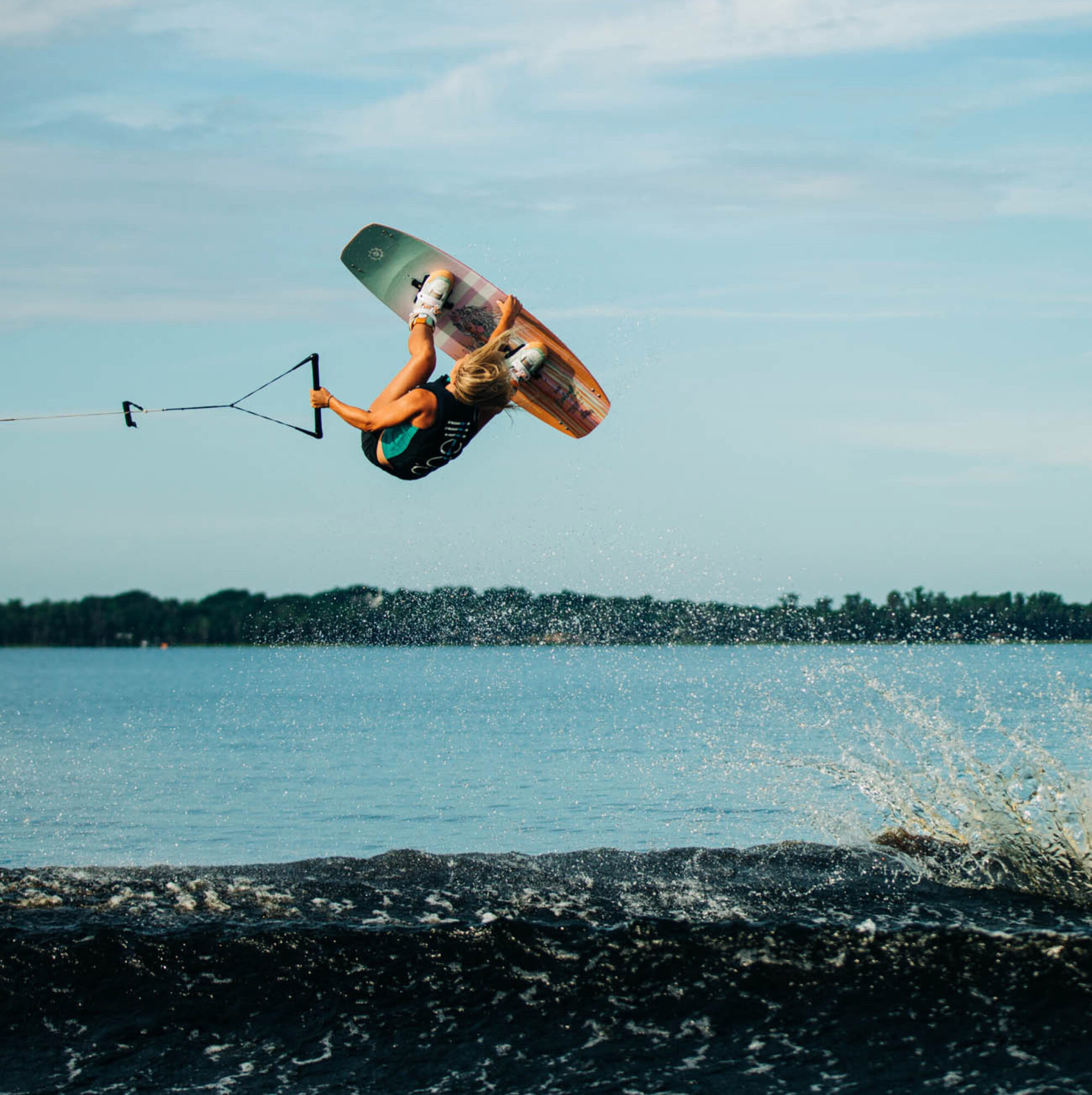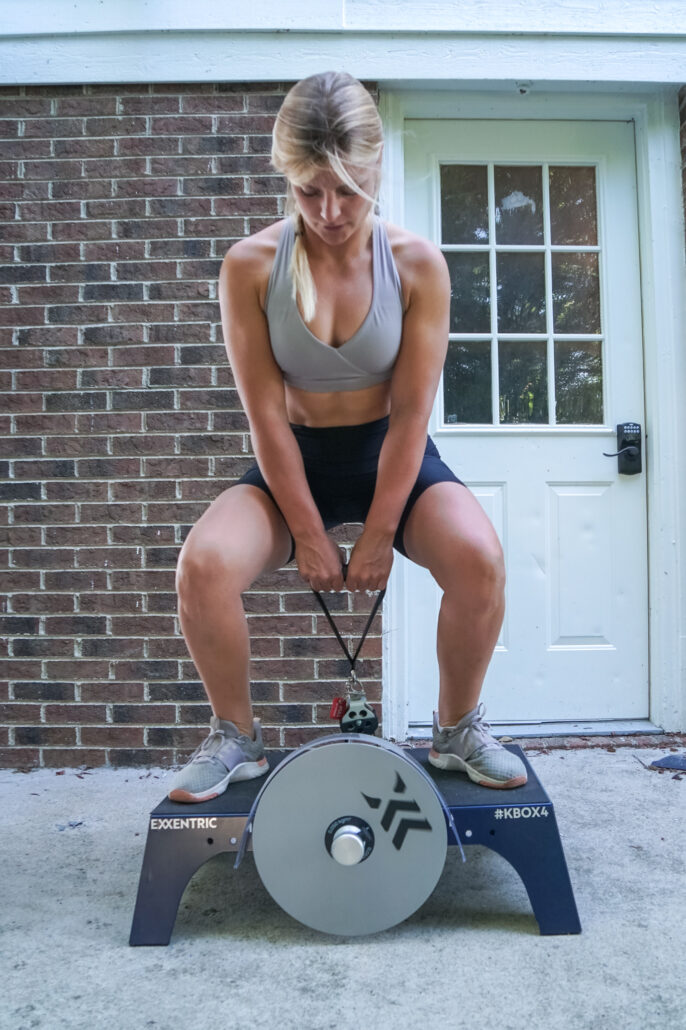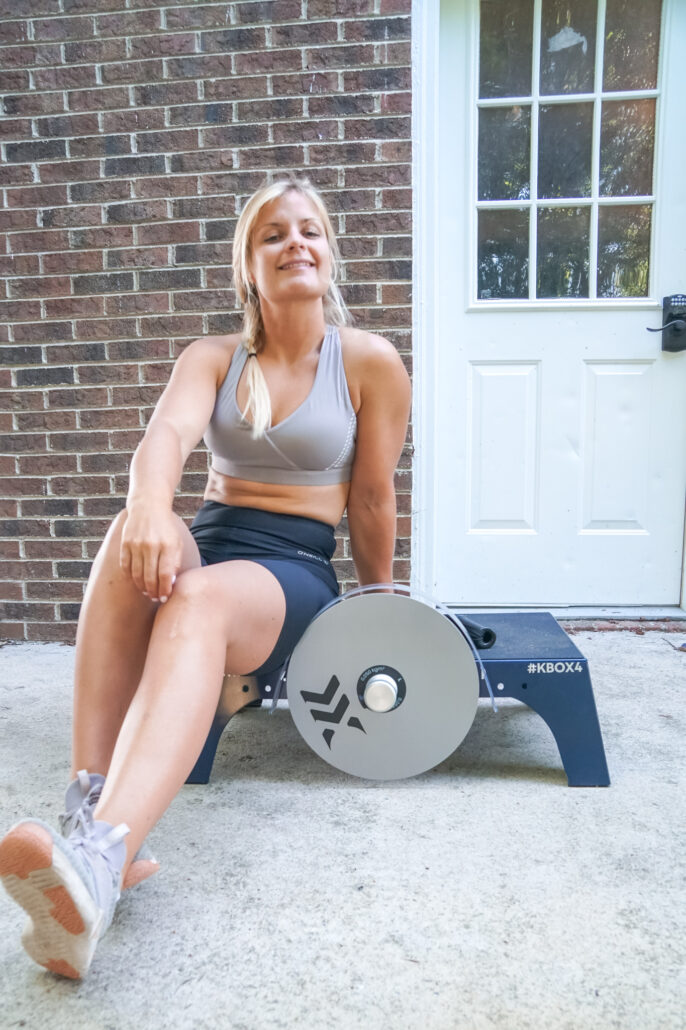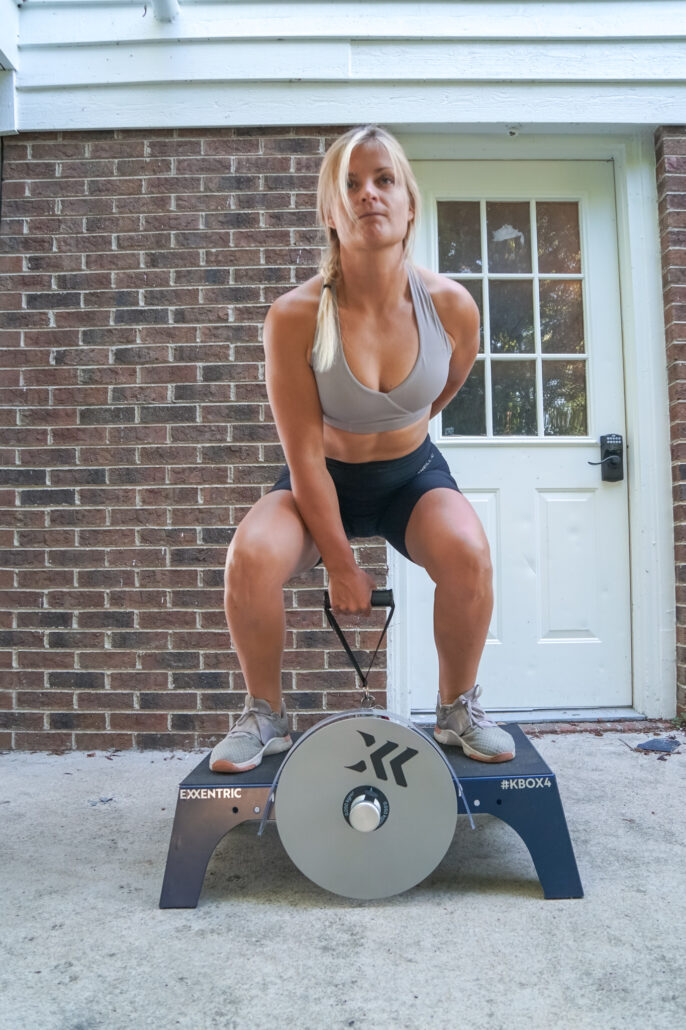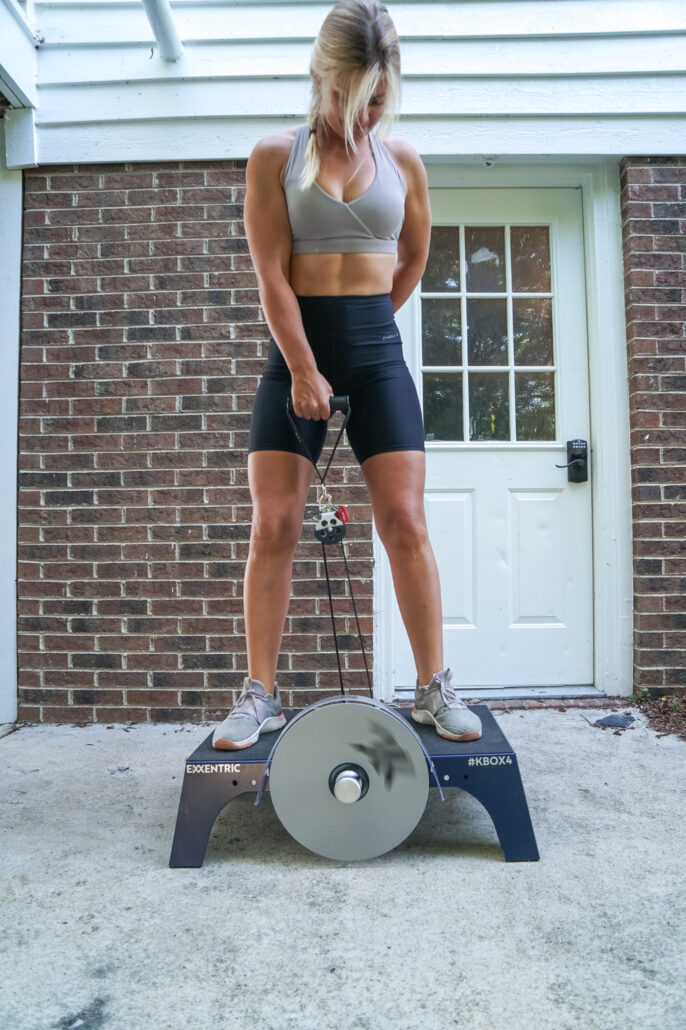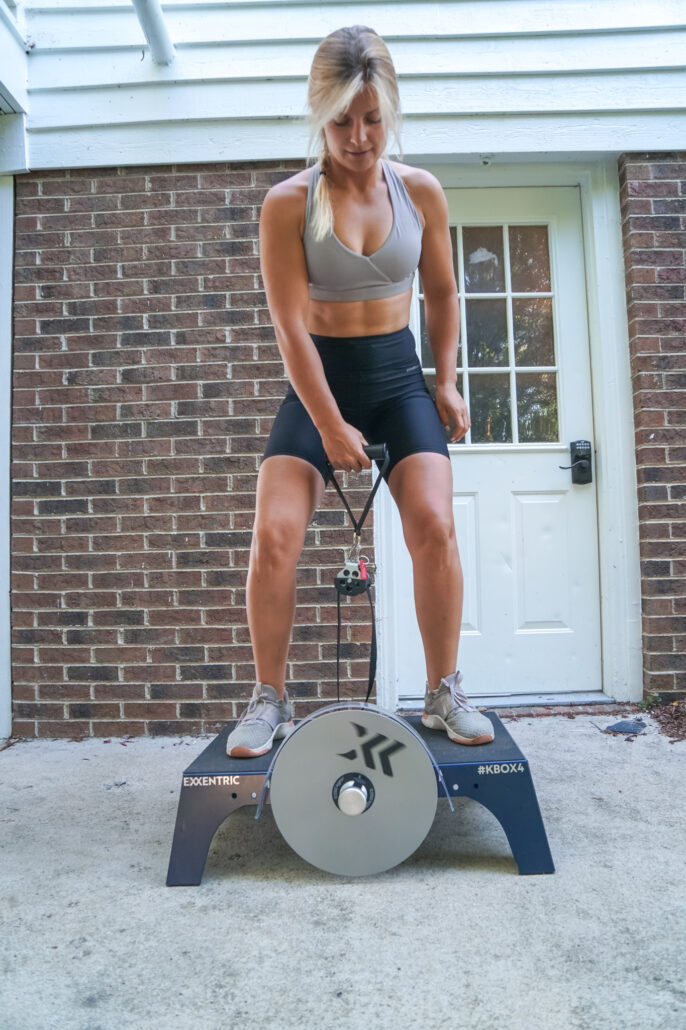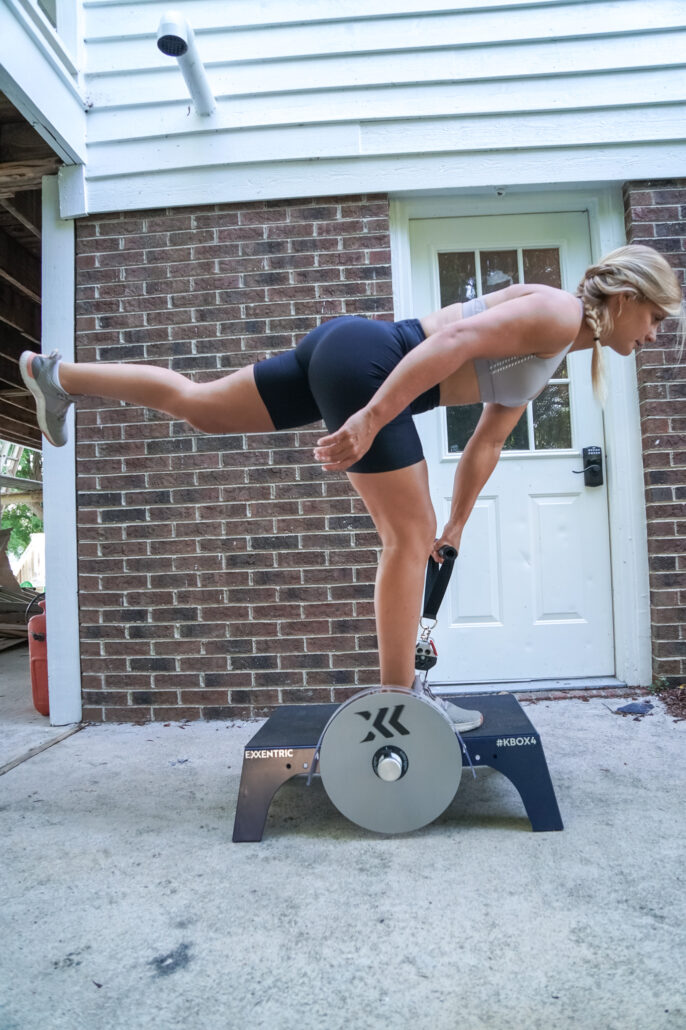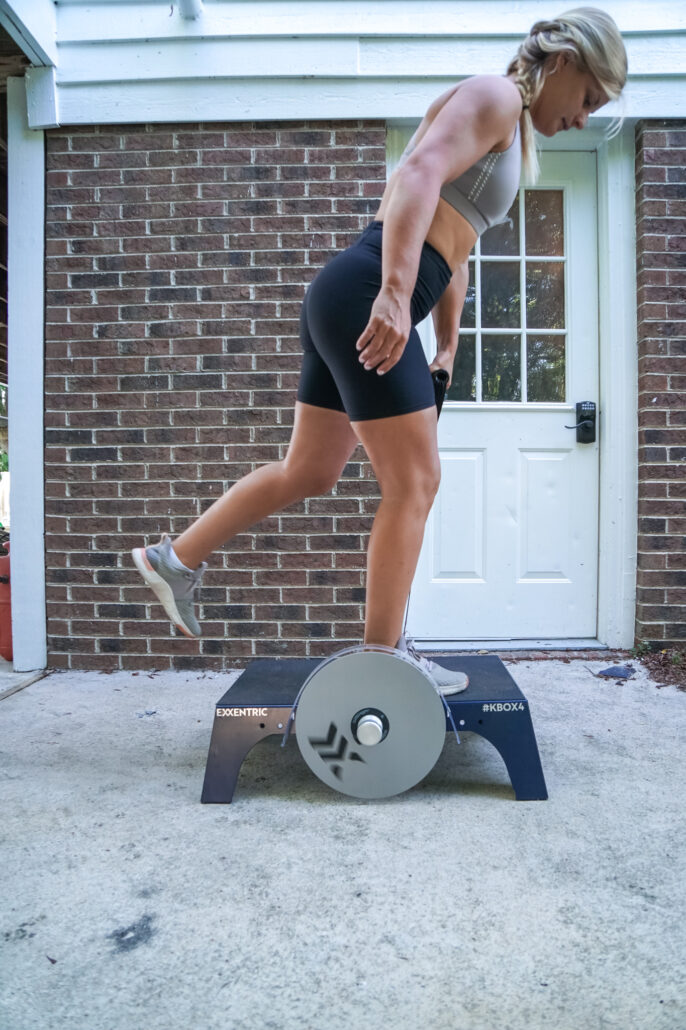– Paid partnership with Exxentric –
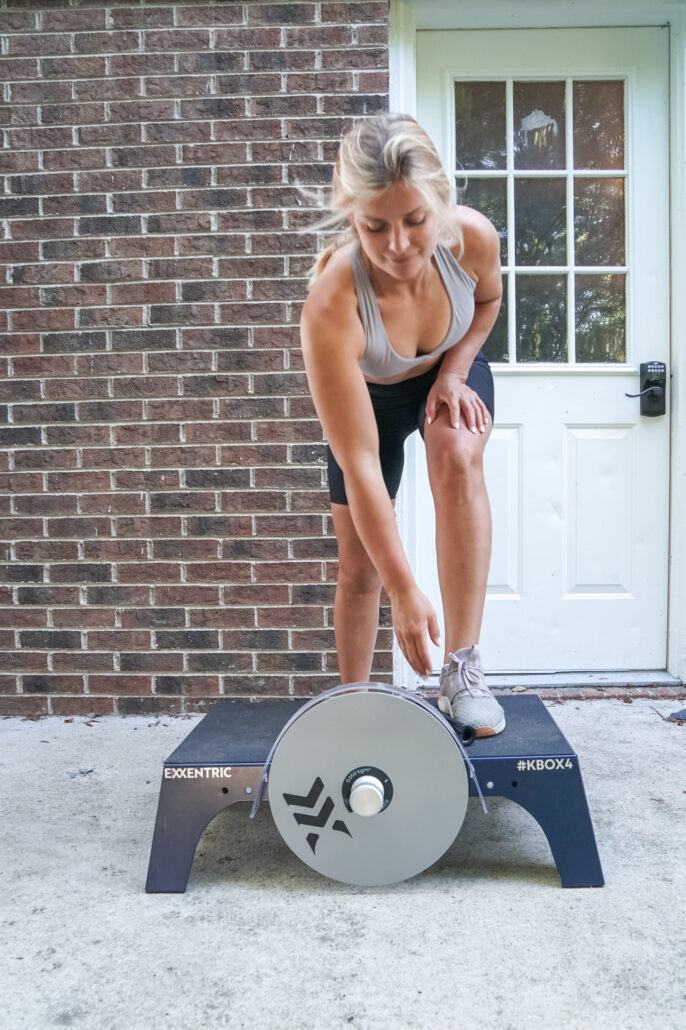
If you’ve been following me for a while, you know that I’ve been through two ACL reconstruction surgeries. You’ve probably seen how ever since I got hurt the first time, in 2016, I’ve taken my off water training very seriously. Both because it makes me perform better as a rider but also to do everything to prevent future injuries. I was first introduced to flywheel training and Exxentric at the Swedish Sports Complex, “Bosön” when I was going trough rehab. I had struggled to feel a good contact with my quads and my glutes since surgery but I was at the stage in rehab where I had full mobility and now needed to focus on regaining my strength. After my physical therapist Britta explained to me how the wheel works, I started to feel that burn almost instantly and I was so happy to wake up the next day to the type of soreness in your muscles, you only get after a really good session.
Fast forward to earlier this year, as I am now recovered from my second ACL surgery on my other knee from 2019. I am now back competing and riding at the highest level I’ve ever been at and much of that I can contribute to the hard work I’ve been putting into the gym. After realising it would be hard to keep up with my training routine during the summer where my travels (usually) takes me all around the world, I came across Exxentric on instagram. It suddenly hit me that the flywheel could be the solution to my issues as I discovered there now was a version designed to be lightweight and easy to travel with, so that I’d never have to compromise my training again. After reaching out, the team at Exxentric welcomed me with open arms and sent me my very own kBox4 lite and tons of accessories meaning I now have a full body gym that fits in my suitcase.
So how does it work? It might not be news to you that the Exxentric Flywheel works with an eccentric overload. But what does that mean and why is it good for you? Basically, humans are much stronger in the eccentric phase of a movement than in the concentric. I saw it in my ACL rehab a lot where I would use two legs to push up various machines (leg press, leg extension machine etc) and one leg on the way down, in the eccentric phase. The reason for this was because my injured leg wasn’t strong enough to push the weights up on its own, but it was strong enough to resist the eccentric forces. In order to optimise my load so that I could quickly rebuild my strength, the eccentric work was crucial and even now, when I’m back training without injuries it is ideal for building strength in the most efficient way. Normal bar-weight training carries the same weigh both up and down but the flywheel actually overloads your eccentric phase so that it is heavier than what you experience in the concentric and therefor brings your training to the next level.
Now that my contest season is in full swing and I spend a lot of my time out training on the water, I still try and keep up with at least 3 strength sessions a week on land and usually 2 of them includes my flywheel in various aspects. There is simply so much you can do with this machine. Everything from traditional squat training, by using the harness, to one legged RDL’s. Or like in this case, trying to incorporate some core into my leg routine by mixing hands to hold the workload. The kBox app also features a ton of exercises and tracks your performance so yesterday I did a full upper body session with the inspiration from there. My training usually consists of movements that activate the entire body as that is what I am encountering while on my wakeboard.
I’m super grateful to be working with this Swedish Company and hope to show you a lot more of my workout routines in the future. Please feel free to reach out if you have any questions about my training! I’d be happy to answer them!
Rock on!
/Carro
